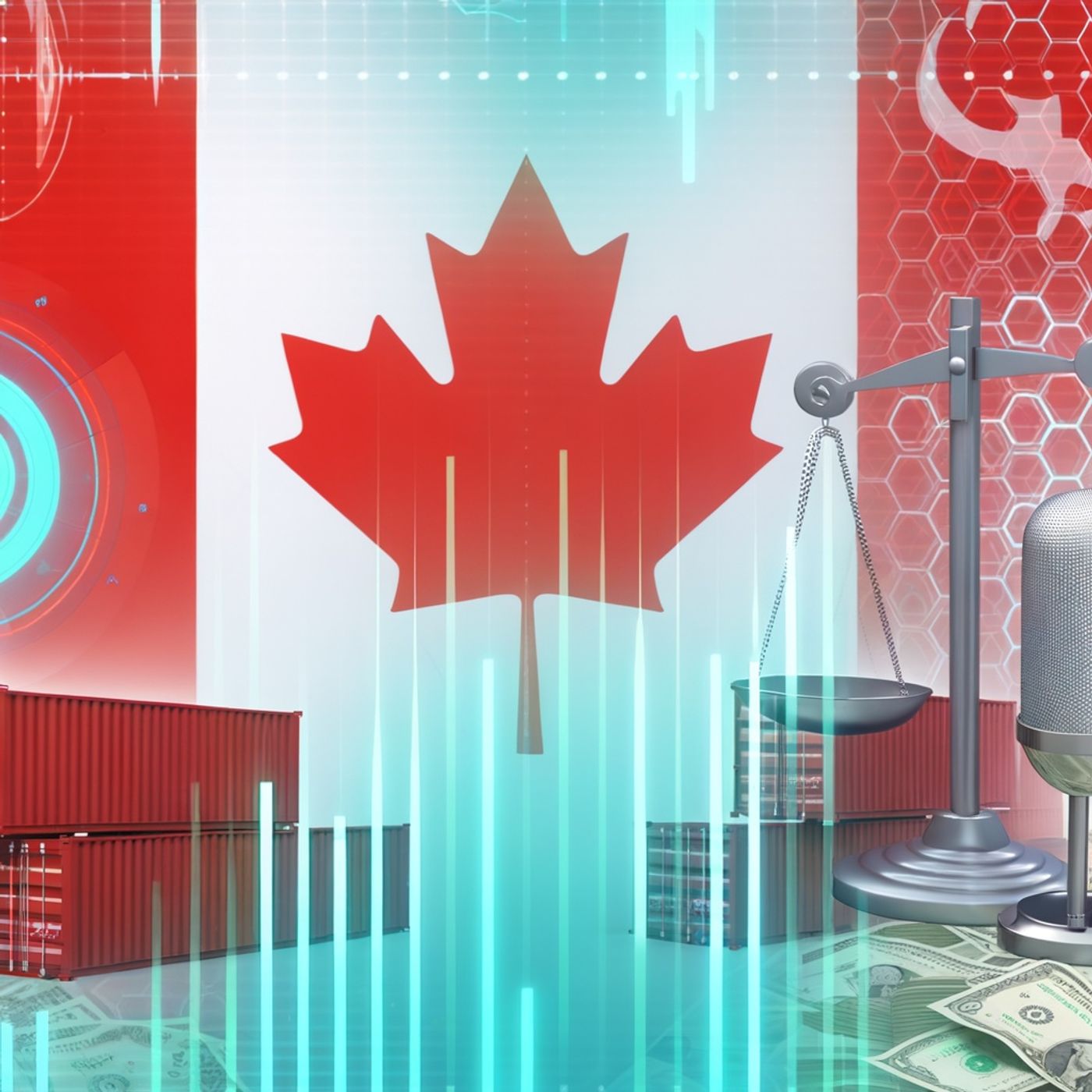US Canada Trade War Escalates as Court Challenges Trump Tariffs Amid Economic Uncertainty and Supreme Court Showdown
Update: 2025-08-31
Description
Listeners, today’s top headlines on Canada Tariff News and Tracker center on a turbulent summer for cross-border trade as the United States, under President Trump, continues to escalate its tariff actions against Canada. The most significant development is a federal appeals court ruling in late August 2025 declaring that the majority of Trump’s tariffs—including key levies on Canadian imports—are illegal. The ruling cited that the president far exceeded his emergency powers, especially in imposing tariffs without Congressional approval, what the court called “unbounded in scope, amount, and duration,” according to TIME and widely reported by outlets like CTV and Global News. Despite this, those tariffs remain in effect until at least October 14, 2025, pending a Supreme Court appeal, with Trump vowing on social media to keep all tariffs in place and labeling the decision highly partisan.
Currently, the overall U.S. tariff rate stands at an estimated 18.6% as of August 2025—a dramatic rise compared to pre-trade war levels, and tariffs now make up nearly 5% of American federal revenue, according to detailed Wikipedia tracking of Trump administration policy. Specific tariffs especially relevant to Canada include a 25% levy imposed on steel, aluminum, and US-made cars that do not meet the latest USMCA trade compliance standards. In retaliation, Canada has maintained a 25% tariff on $20 billion, or about $30 billion Canadian, in U.S. goods, and added fresh duties on another $20.6 billion worth of U.S. exports in March. These measures target everything from agricultural products to manufactured goods, intensifying the trade battle.
The rapid changes have left both Canadian exporters and American importers facing a climate of deep uncertainty. As reported by CTV and Global News, financial markets have shown volatility, businesses are unsure how to plan for the fall, and carmakers are scrambling to ensure their vehicles are USMCA-compliant to avoid these high duties. Canadian officials had hoped exemptions under the USMCA would last, but Washington’s sudden moves and the threatened removal of these exemptions during next year’s trade renegotiations mean businesses are stuck in limbo.
In addition, the political impact in Canada has been significant. Mark Carney’s victory in the April federal election is partly attributed to a surge in anti-Trump sentiment over these trade disputes and the threat to Canadian industry, as reported by coverage in the Wall Street Journal and Wikipedia.
With high stakes for both economies and the Supreme Court due to weigh in by year’s end, listeners can expect tariffs, legal appeals, and policy uncertainty to remain front and center through the fall. For now, most tariffs—on both sides—remain active, fueling higher consumer prices, disrupted supply chains, and tense diplomatic exchanges.
Thank you for tuning in to Canada Tariff News and Tracker. Be sure to subscribe for continued updates on all things tariffs, trade, and Canada-U.S. relations. This has been a quiet please production, for more check out quiet please dot ai.
For more check out https://www.quietperiodplease.com/
Avoid ths tariff fee's and check out these deals https://amzn.to/4iaM94Q
This content was created in partnership and with the help of Artificial Intelligence AI
Currently, the overall U.S. tariff rate stands at an estimated 18.6% as of August 2025—a dramatic rise compared to pre-trade war levels, and tariffs now make up nearly 5% of American federal revenue, according to detailed Wikipedia tracking of Trump administration policy. Specific tariffs especially relevant to Canada include a 25% levy imposed on steel, aluminum, and US-made cars that do not meet the latest USMCA trade compliance standards. In retaliation, Canada has maintained a 25% tariff on $20 billion, or about $30 billion Canadian, in U.S. goods, and added fresh duties on another $20.6 billion worth of U.S. exports in March. These measures target everything from agricultural products to manufactured goods, intensifying the trade battle.
The rapid changes have left both Canadian exporters and American importers facing a climate of deep uncertainty. As reported by CTV and Global News, financial markets have shown volatility, businesses are unsure how to plan for the fall, and carmakers are scrambling to ensure their vehicles are USMCA-compliant to avoid these high duties. Canadian officials had hoped exemptions under the USMCA would last, but Washington’s sudden moves and the threatened removal of these exemptions during next year’s trade renegotiations mean businesses are stuck in limbo.
In addition, the political impact in Canada has been significant. Mark Carney’s victory in the April federal election is partly attributed to a surge in anti-Trump sentiment over these trade disputes and the threat to Canadian industry, as reported by coverage in the Wall Street Journal and Wikipedia.
With high stakes for both economies and the Supreme Court due to weigh in by year’s end, listeners can expect tariffs, legal appeals, and policy uncertainty to remain front and center through the fall. For now, most tariffs—on both sides—remain active, fueling higher consumer prices, disrupted supply chains, and tense diplomatic exchanges.
Thank you for tuning in to Canada Tariff News and Tracker. Be sure to subscribe for continued updates on all things tariffs, trade, and Canada-U.S. relations. This has been a quiet please production, for more check out quiet please dot ai.
For more check out https://www.quietperiodplease.com/
Avoid ths tariff fee's and check out these deals https://amzn.to/4iaM94Q
This content was created in partnership and with the help of Artificial Intelligence AI
Comments
In Channel





